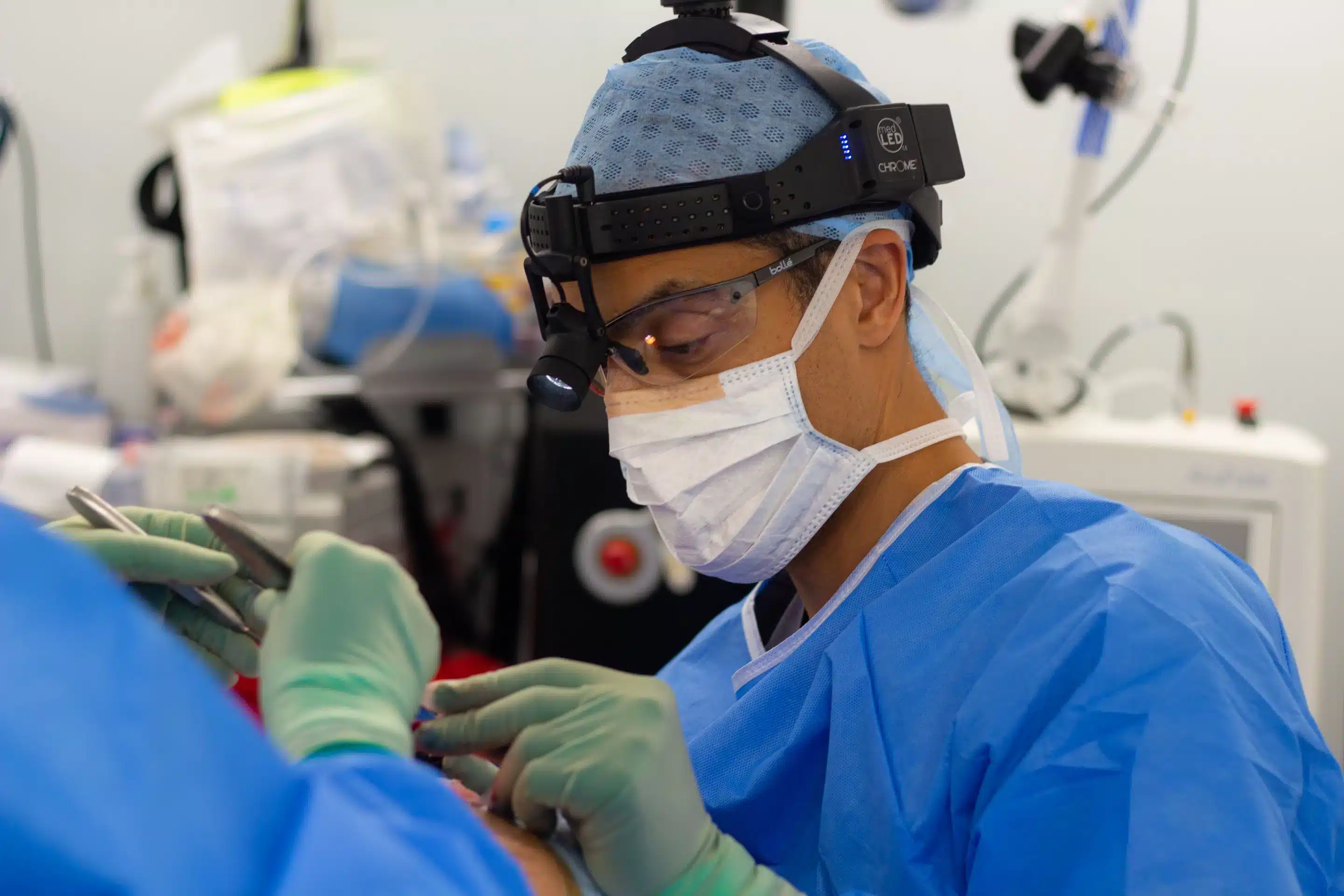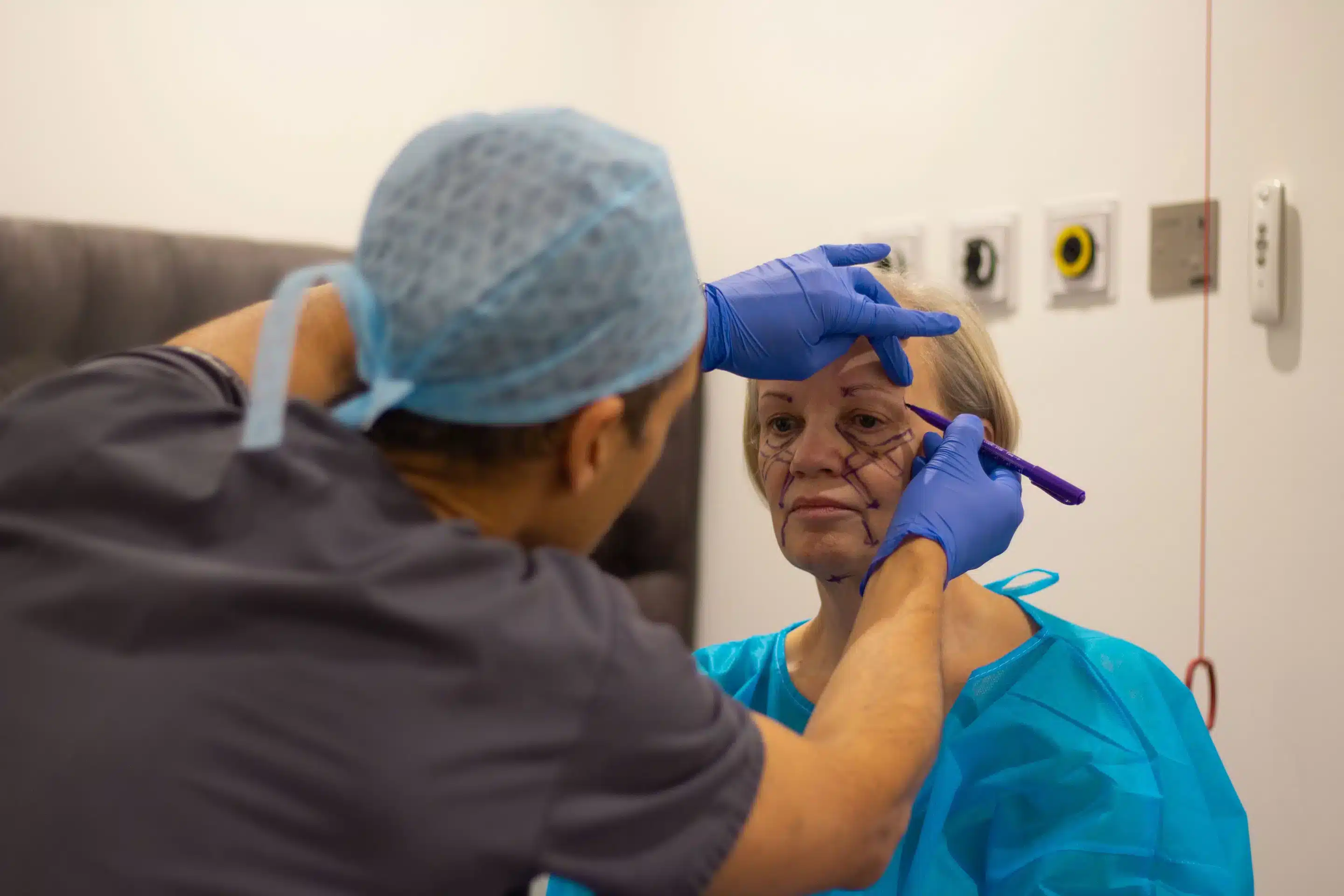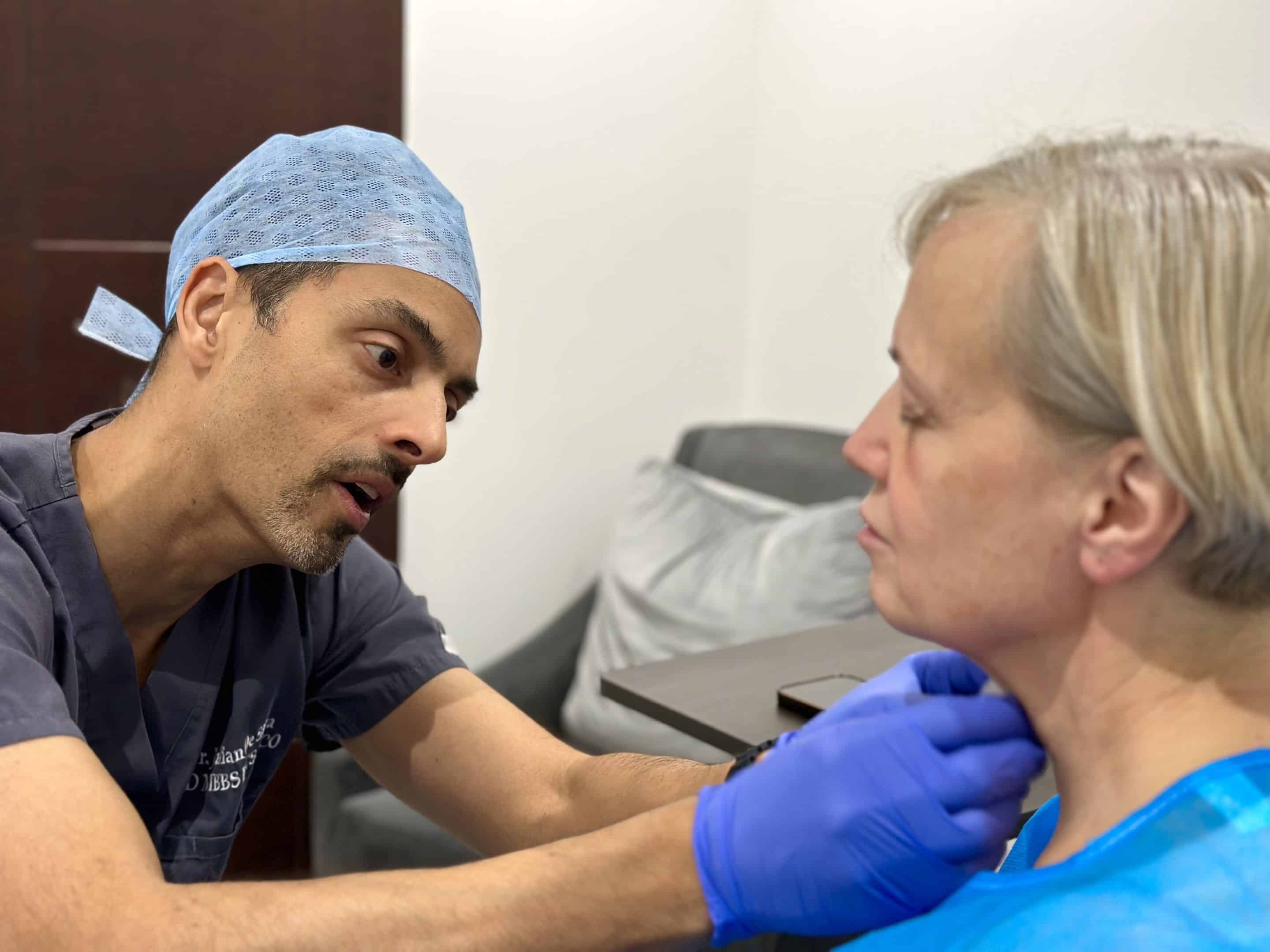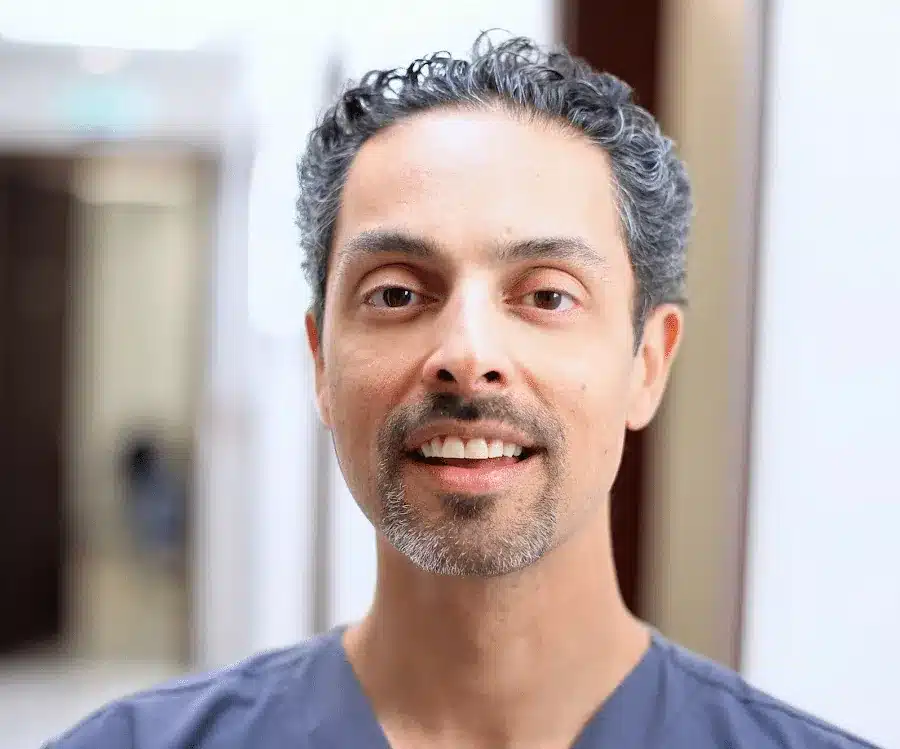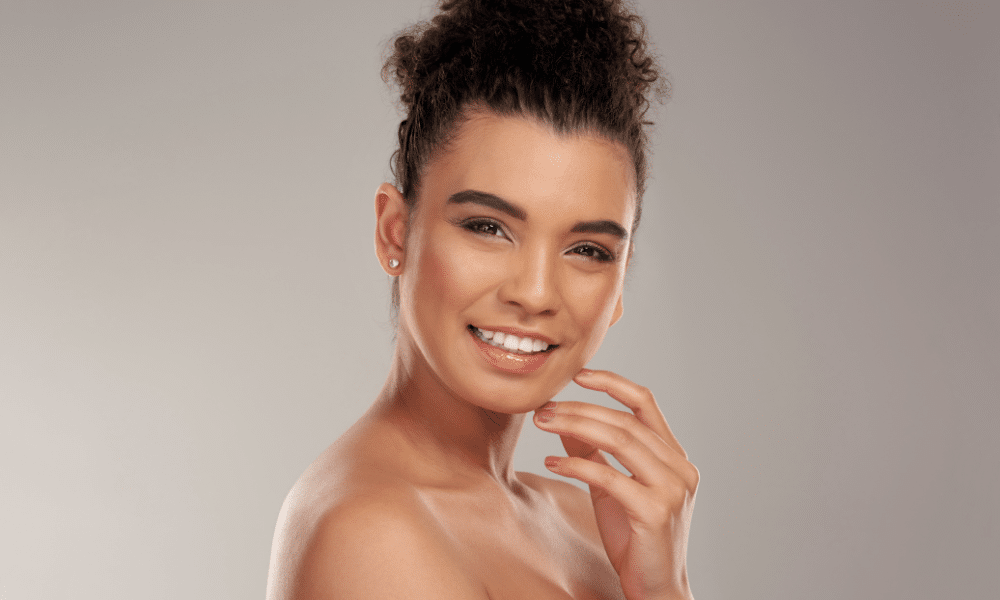
If you’re planning to have a nose job or rhinoplasty, knowing how nose shapes affect the surgery helps.
In this article, I’ll talk about the types of nose and how they can affect surgery. I’ll also show you before and after photos of people who went under surgery to enhance their nose shapes.
Sniffing Out Nose Shapes: The 12 Most Common Nose Types
Each nose shape is unique to each person. These types of nose are defined primarily by your nasal bone structure and nasal cartilage. However, nose shapes can share a few features and characteristics to help you determine which type, while not exactly the same, closely resembles yours.
Fleshy Nose
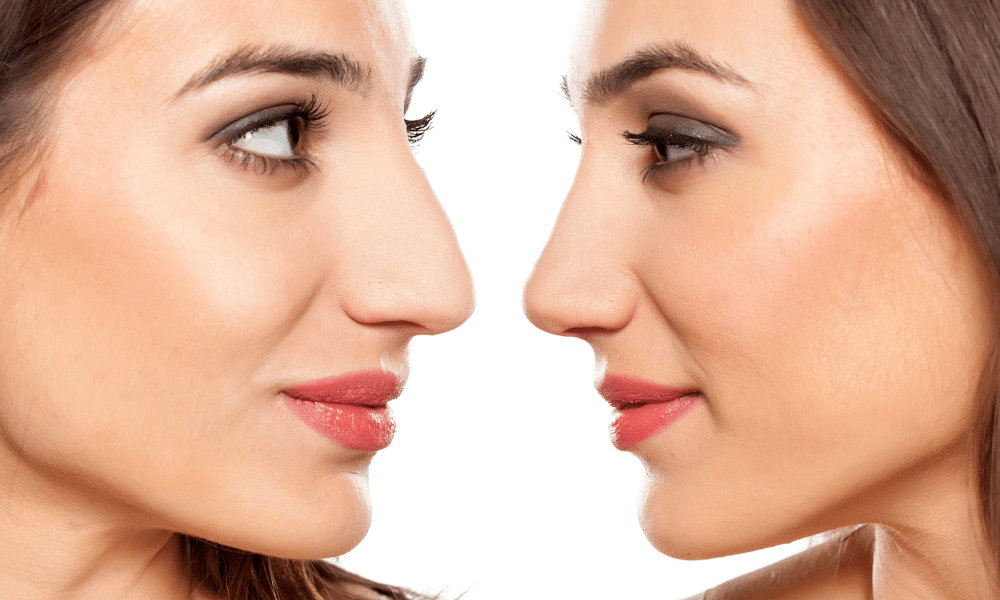
The fleshy nose is the most frequently seen nose shape. Also known as “The Einstein” because of its plump appearance, this nose type is defined by its soft, bulging form. Regardless of its size, its hallmark is a more rounded look, devoid of prominent bone structure. Notable figures, such as Prince Philip and Mark Ruffalo, boast this nose type.
Turned-Up Nose
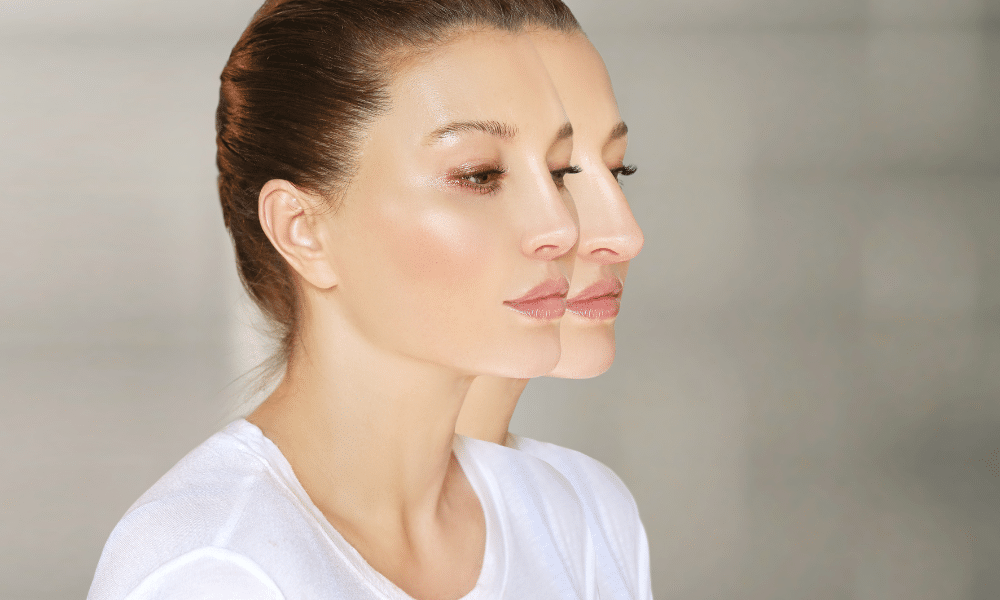
The turned-up or celestial nose is characterised by its small size, with a central dent and a protruding lobule. This particular nose shape has been popularised by celebrities like Emma Stone, making it a sought-after shape in cosmetic clinics.
Roman Nose
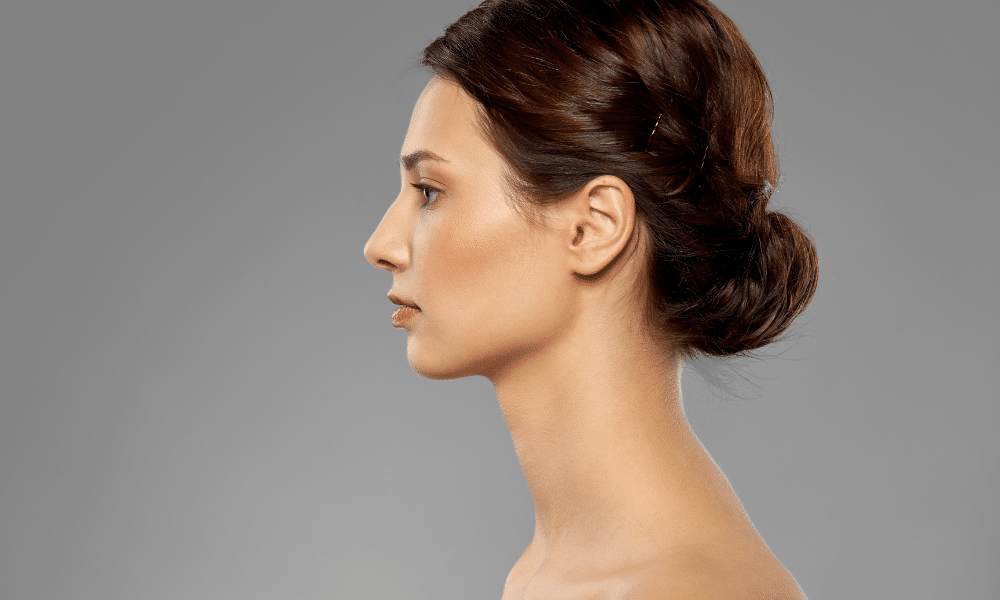
The Roman nose has a historic touch to it. Named after the statues of ancient Rome, this nose shape is characterised by a sloped curve that sticks out prominently. The bridge of this nose commonly bends slightly, giving it a unique profile. Hollywood stars such as Tom Cruise and Ryan Gosling proudly sport this aquiline nose shape.
Bumpy Nose
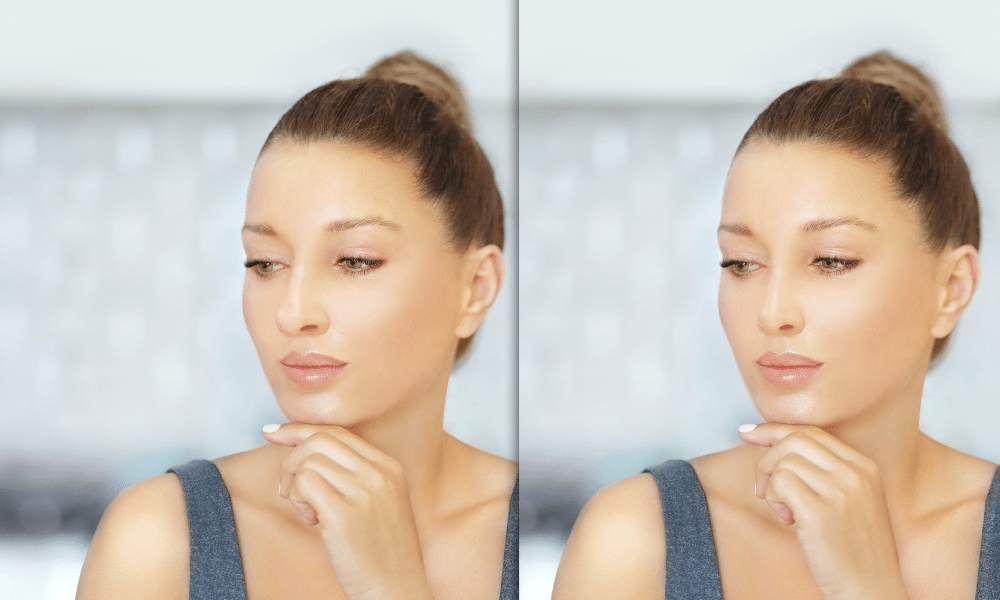
Bumps on the nose are not uncommon, and this nose type is evident in roughly 9% of people. Those with such nose shapes, due to its bumpy outline, often consider rhinoplasty since the bump can be easily smoothened out in such procedures.
Snub Nose
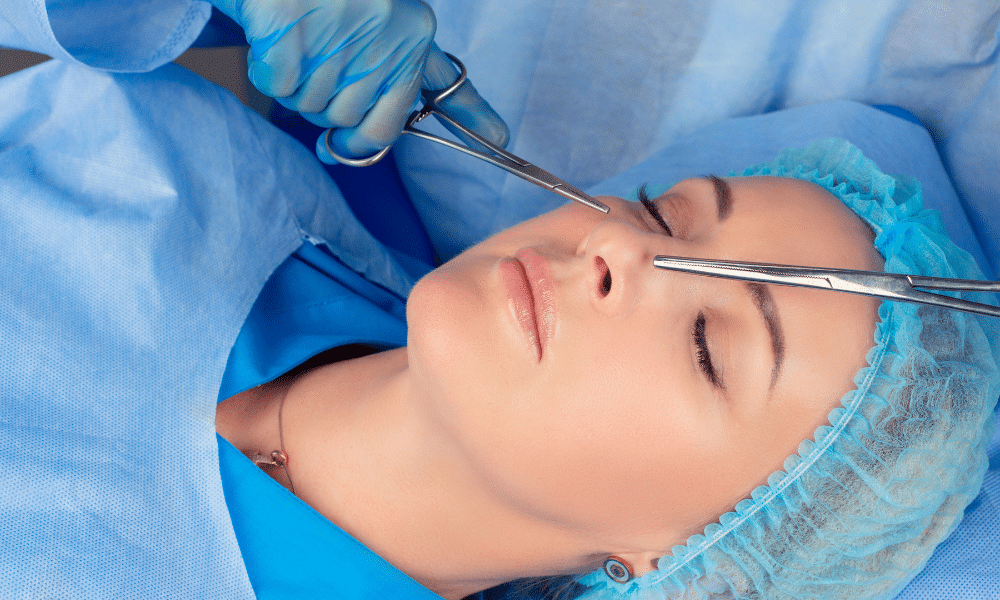
With a tip featuring slight upward slope, the snub nose is known for its softer and rounder appearance. This sets it apart from the more pointed celestial nose.
Hawk Nose
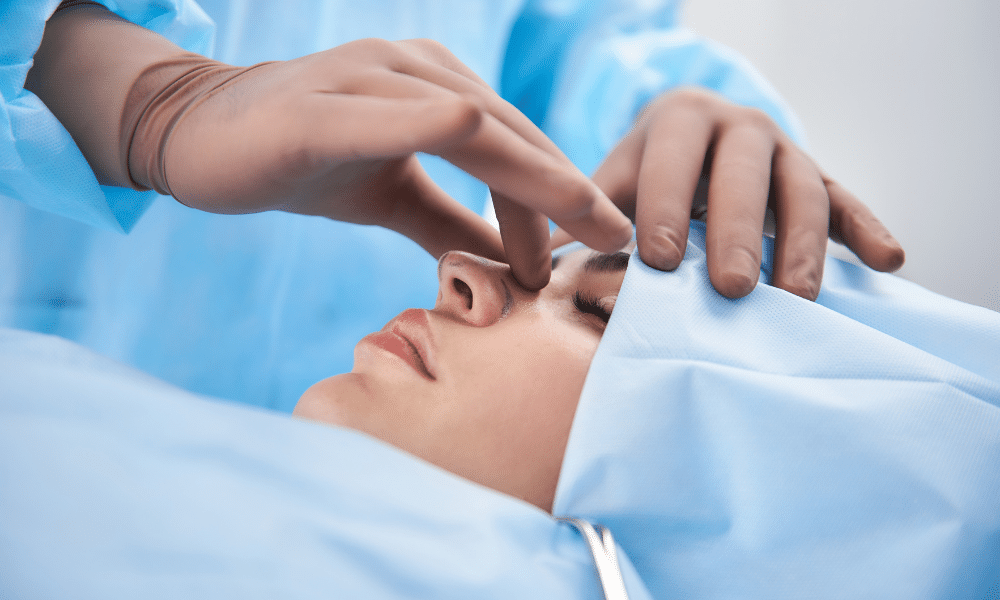
The hawk nose is striking and mirrors the beak of predatory birds, with its pronounced curve and dominant bridge. It’s a defining trait for individuals who have a powerful profile.
Crooked Nose

Crooked noses are frequently caused by a birth deformity or genetic issue that alters the way the nose grows. Therefore it is more adverse relative to a bumpy nose and may call for surgical correction. A qualified surgeon, on the other hand, can aesthetically fix both sorts of nose issues.
Greek Nose
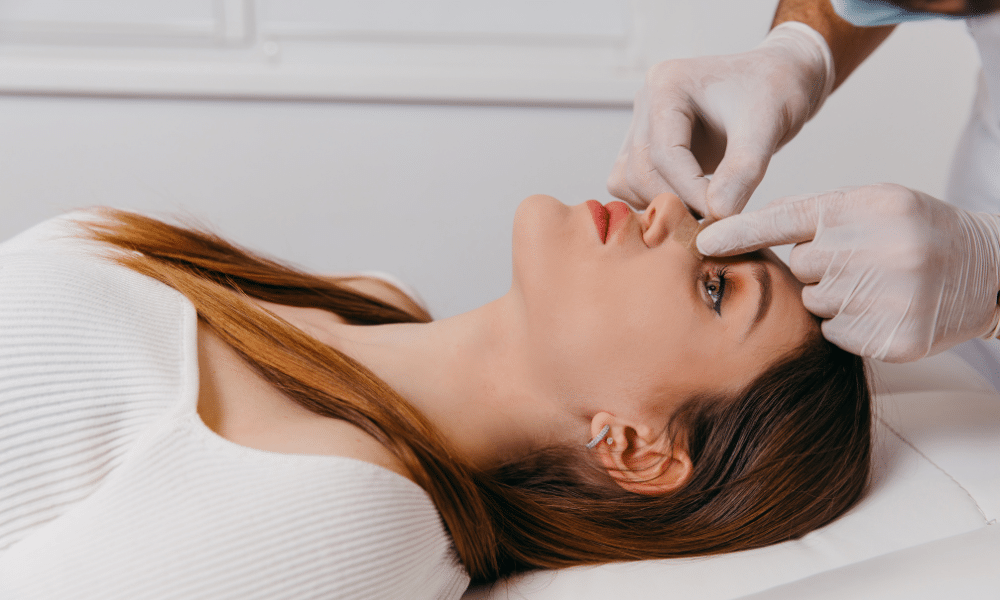
Steeped in history, the Greek nose is reminiscent of the statues from ancient Greece. Often termed “the straight nose”, it’s known for its smooth, linear bridge, making it a classic.
Nubian Nose
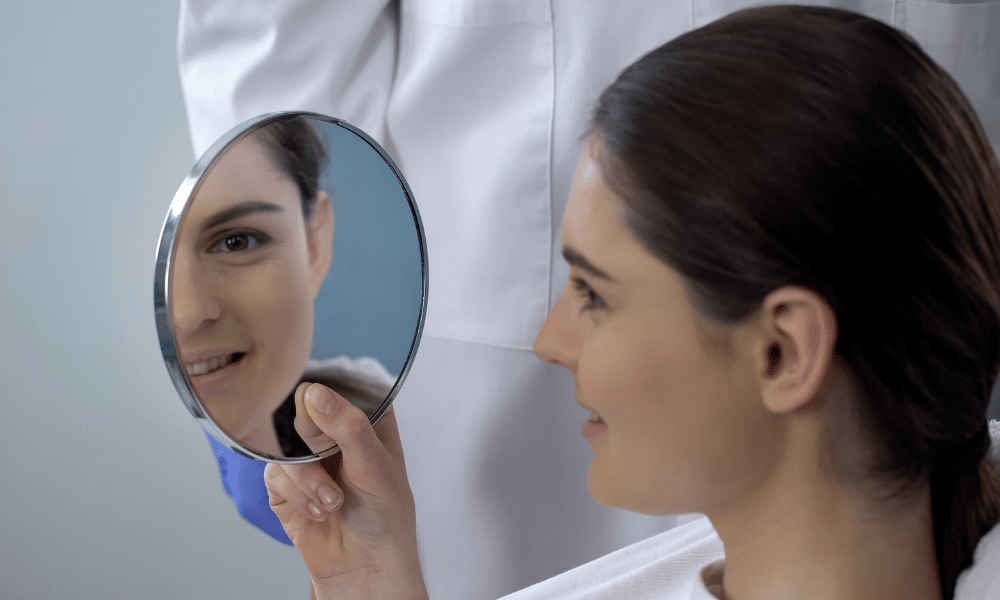
Primarily common in African people, the Nubian nose stands out with its elongated bridge and expansive base. Given its width, many with this nose shape often opt for cosmetic procedures to narrow it down.
East Asian Nose
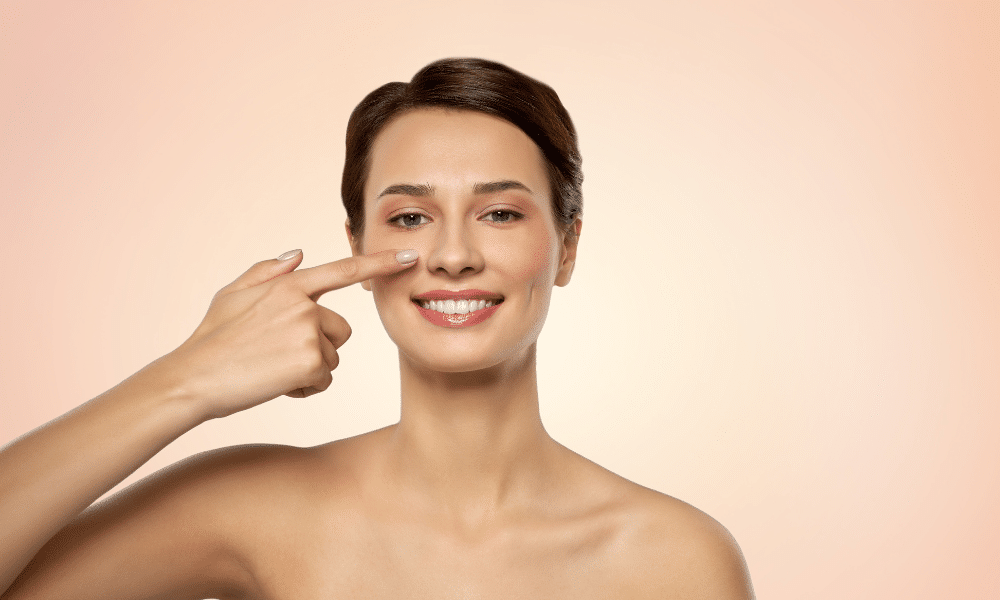
Distinct in its slender and flat shape, this nose type is a common feature among East Asians. It’s not uncommon for individuals with this nose shape to seek cosmetic enhancements to give their nose a broader or more elevated appearance.
Nixon Nose
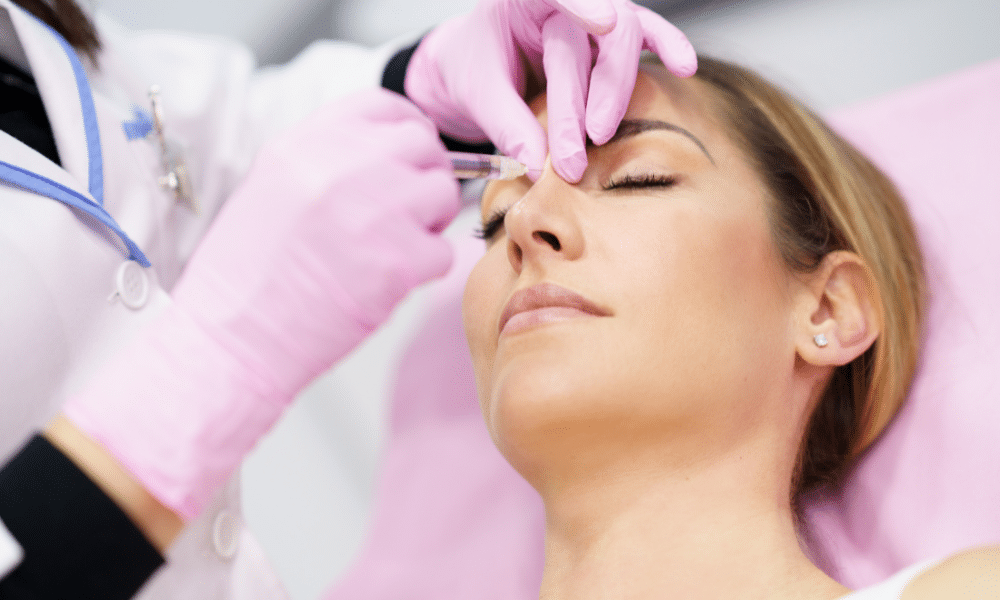
A rarer nose shape, the Nixon nose, reminiscent of the 37th US President, is known for having a straight edge that ends in a broader tip.
Bulbous Nose

Often a subject of caricatures, the bulbous nose stands out with its pronounced, rounded tip. It’s indeed a unique nose shape, gracing lower than 0.5% of people.
Which Type of Nose Is Best?
While nose shapes all boil down to preferences and unique features, people who want to undergo rhinoplasty want to achieve certain nose shapes to balance their facial proportions and face.
Depending on the rest of your face, the best types of nose depend on the symmetry and proportion of your unique characteristics.
What Is the Rarest Nose Shape?
Nose shapes that resemble different types of nose features, known as the combo nose, are considered uncommon and unique.
The bulbous nose is considered the rarest nose shape, with only 0.5% of the population having it. Some noses also exhibit characteristics of different nose shapes, also called “combo noses,” making them even more unique and less common among people.
Can the Nose Shape Change?
While your bones cease growing when you reach adolescence, certain biological tissues may continue to change throughout your life. As you age, your nasal shape, which is made up of bone, soft tissue/skin, and cartilage, may change. The nose’s structures and skin lose strength over time, causing the nose to spread out and sag downward.
The glands within the skin, particularly at the tip, may grow, giving the appearance of a wider, heavier nose. While it is debatable whether cartilage truly grows, it can definitely appear to do so from the outside.
What Is the Most Attractive Nose Shape?
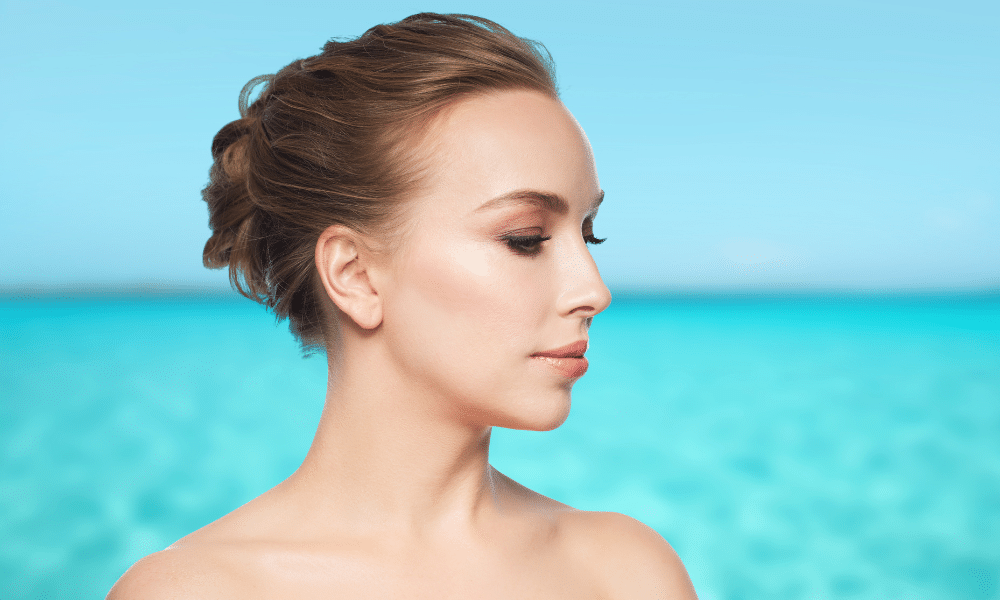
The turned-up nose or celestial nose is among the most popular and attractive nose shapes people want to achieve through a nose job. Other popular nose shapes include the Roman nose, the Greek nose or straight nose, and the snub nose. These are all considered attractive features.
What Shapes Leave the Nose Permanently Blocked?
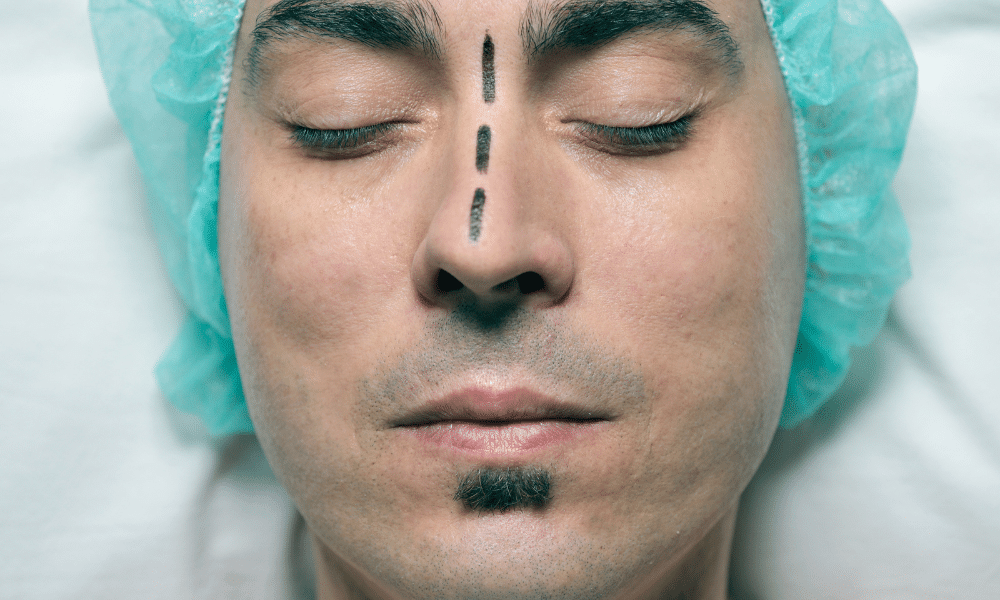
When your nasal septum runs straight down the middle of your nostrils, each side has equal breathing space. When your nasal septum is crooked or deviated, one side of your nose becomes smaller than the other. This can make it difficult to breathe.
Deviated septum surgery is a type of plastic surgery that can be used to address nose issues. Although it is frequently performed as a cosmetic operation, it can also help to improve nose function. It is also used to relieve breathing problems by opening up the airways.
However, this surgery must only be performed by an expert rehinoplasty surgeon to avoid complications.
Rhinoplasty Before and After Results
Here are some before and after photos of my rhinoplasty patients:
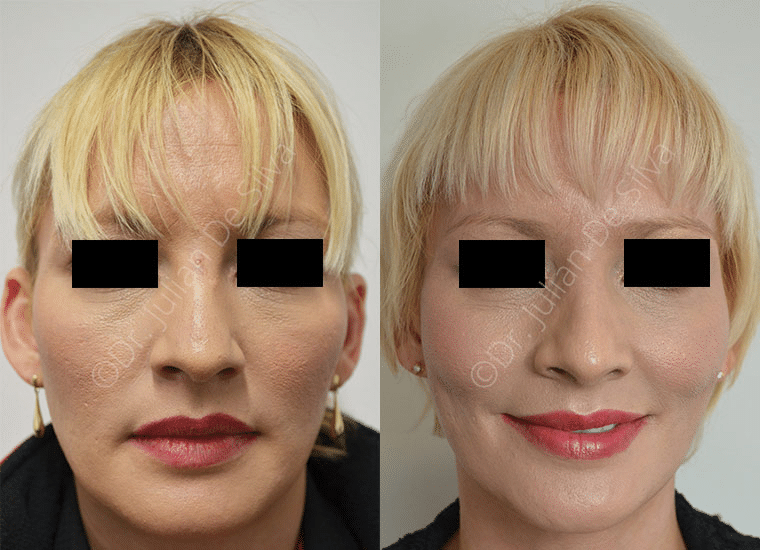
This 40-year-old woman was dissatisfied with her nose’s droopy tip and noticeable bulge on the bridge. She also reported having sinusitis and difficulty breathing due to a deviated septum. Her nasal bump was reduced as part of a combination open rhinoplasty and septoplasty performed by me, Dr. De Silva.
In addition, I gave her nose tip some more shaping and raised it to a more beautiful position. The image under evaluation was taken about 8 weeks following surgery, and it displays an improved nasal profile with a straight, appealing, and natural-looking nose. She also reported better breathing.
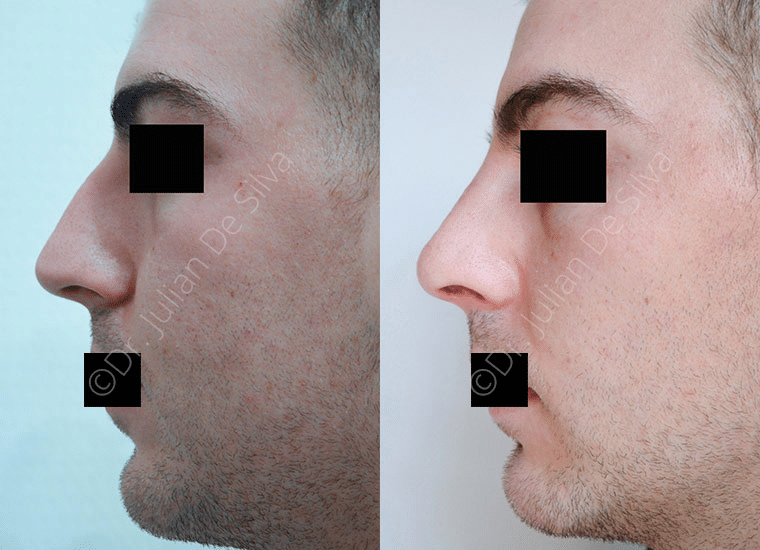
This 20-year-old man was dissatisfied with the size of his nose and the noticeable bulge on his nasal bridge. Reviewing her photo revealed that he had a pretty prominent nose for his somewhat tall build.
In an open rhinoplasty, I reduced the patient’s nasal hump and added contoured graft support to the nose’s bridge. Additionally, he had his nasal tip cartilages sculpted, and his projection was slightly reduced (size of nose, position of the nose from the face).
A close examination of the “post” shot reveals a straighter nose, a light elevation of the tip, and a nose that’s in balance with the proportions of his face.
He wrote the following review because he was so pleased with the outcome. This is what the patient said in their review: “I had rhinoplasty. Dr. Julian and his his staff were very accommodating and welcoming prior to the treatment. I am really pleased with the outcome and would highly recommend Dr. Julian to anyone thinking about having facial surgery. If I were considering a different treatment, I would definitely work with him again.”
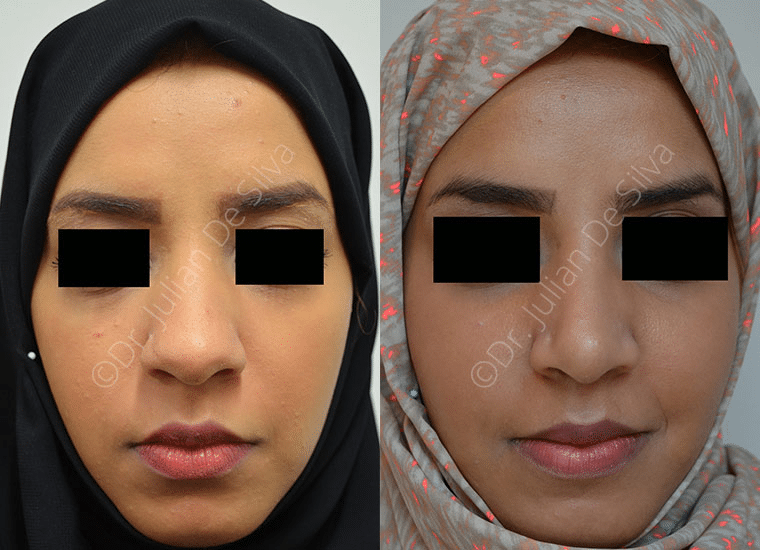
The nasal bump, the relatively large bulbous nasal tip, and the unusually huge nose for her facial features and body made this young Middle Eastern woman in her 20s dissatisfied.
The procedure entailed careful reduction, reshaping, and meticulous stitching, employing techniques like support grafts and raising the nasal tip for an enhanced aesthetic.
Reviewing the snapshot taken eight weeks after the surgery reveals that she has improved the form and definition of her nasal tip and an almost imperceptible scar. In order to hasten the healing process following Middle Eastern ethnic rhinoplasty, I, Dr. De Silva, ise anti-inflammatory drugs to reduce swelling in the nasal tip.
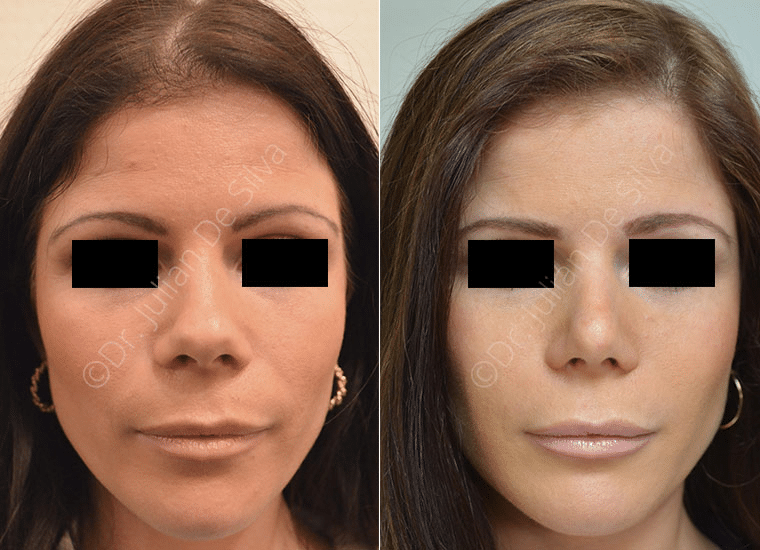
A young 23-year-old was self-conscious about her nose, specifically the large tip and wide nostrils.
In an open rhinoplasty, I shaped the cartilages in the patient’s nasal tips and added support for the bridge of her nose with sculpted grafts. She also had a measured nostril reduction with covert incisions while maintaining normal breathing.
When compared to the “post” photo taken at 4 months, the nose is straighter with a refined nasal tip and smaller nostrils.
Visit Julian De Silva – Rhinoplasty, London
Want to know more about rhinoplasty? Check out our Patient’s Guide to Rhinoplasty Surgery to learn more about the rhinoplasty process.
Are you looking for an experienced plastic surgeon that can help enhance your nose and other facial features? Book a consultation with me, Dr. Julian De Silva, now!

